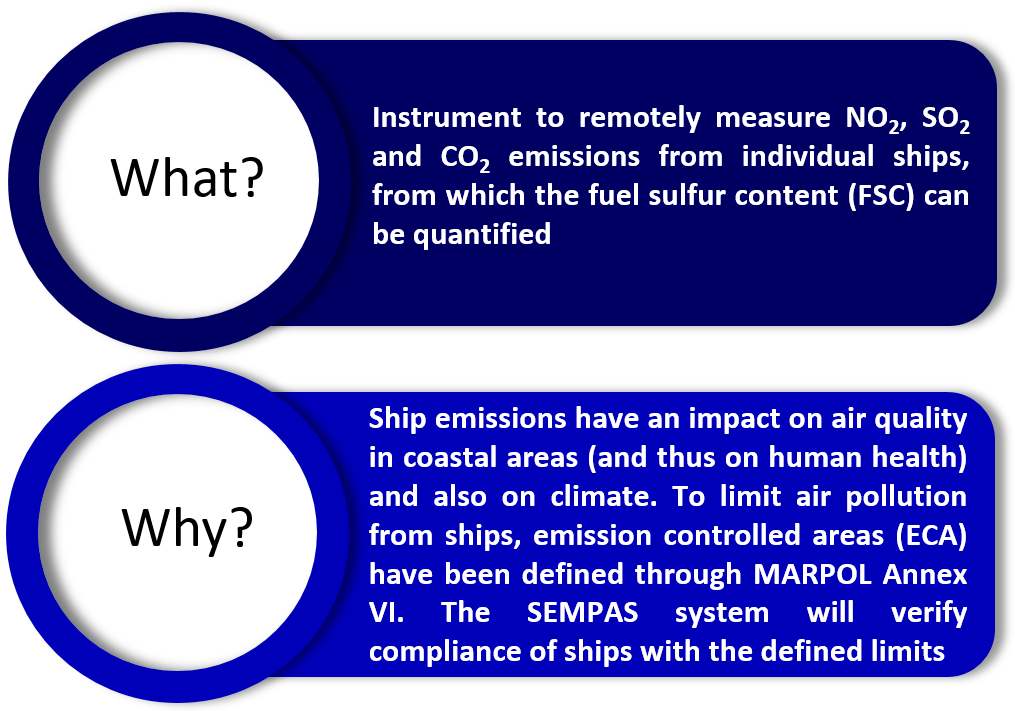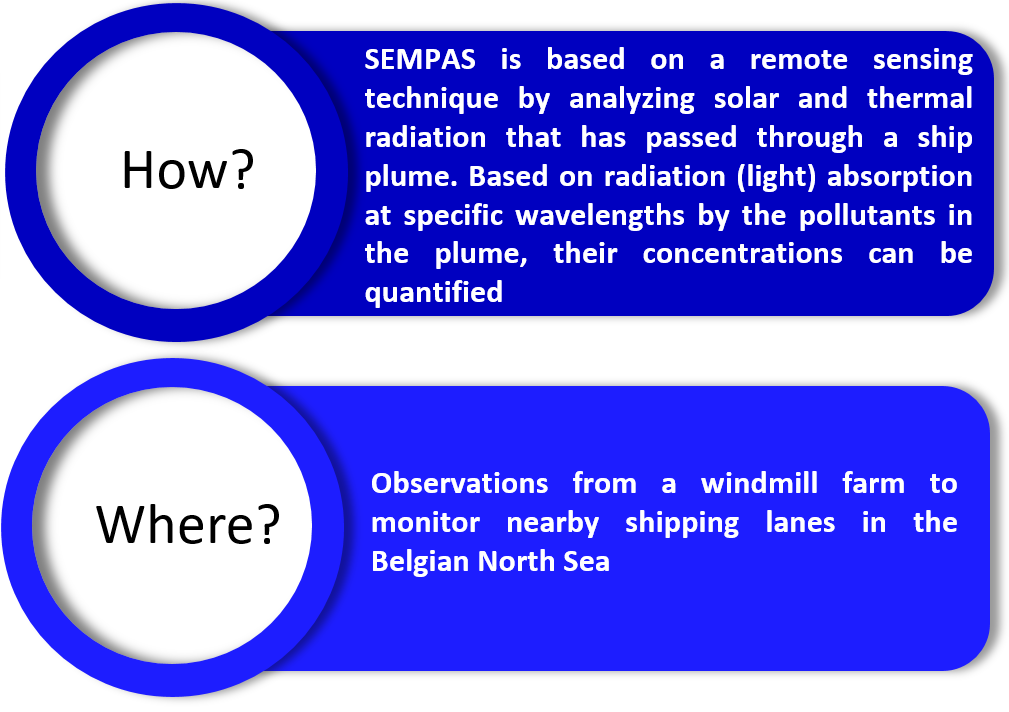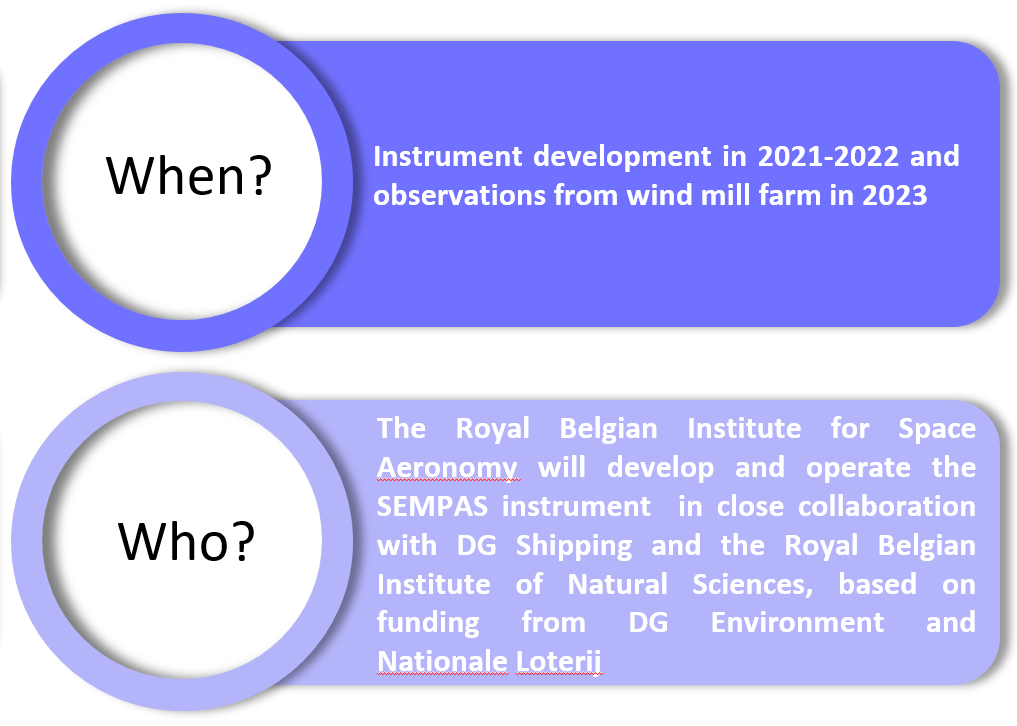|
~
|

Recently BIRA launched a project to develop an instrument, called SEMPAS (Ship Emission Monitoring by Passive Absorption Spectroscopy), to remotely measure NO2, SO2 and CO2 emissions from individual ships, from which the fuel sulfur content (FSC) can be quantified. Every year, more than 62,000 ships pass through the Belgian part of the North Sea. These ships emit various pollutants into the marine space and coastal zones, which are often densely populated. Ship emissions have an impact on air quality in coastal areas (and thus on human health) and also on climate. To limit air pollution from ships, emission controlled areas (ECA) have been defined by the International Maritime Organization (IMO) through MARPOL Annex VI. The SEMPAS system will be able to verify compliance of ships with the defined limits for SO2/FSC and NO2. The main objective is to measure emissions from individual ships sailing through the Belgian part of the North Sea. Getting a clear picture of what kind of emissions are emitted by individual ships and in which amount has three purposes: first, it can strengthen the enforcement of existing regulations on sulphur (SO2) and, from 2021, on nitrogen dioxide (NO2). These measurements will allow to detect and sanction ships that are not in compliance with SECA and NECA standards for the North Sea. On the other hand, this allows us to get a view on emissions for which there is not yet a regulatory framework (e.g. CO2), but for which more data is needed to adopt appropriate regulations. It also allows us to get a view on the contribution of ship emissions to air pollution in coastal areas and their impact on public health. Ship emissions will be measured using an innovative system to be developed by BIRA. SEMPAS is based on a remote sensing technique by analyzing solar (VIS channel for SO2 and NO2) and thermal (TIR channel for SO2 and CO2) radiation that has passed through a ship plume. Based on radiation (light) absorption at specific wavelengths by the pollutants in the plume, their concentrations can be quantified. Observations will be performed from a windmill farm to monitor nearby shipping lanes in the Belgian North Sea. The instrument and algorithms will allow to actively track ships and determine concentrations of pollutants in ship plumes in a radius of maximum 5-10 km around the instrument. The instrument will be developed in 2021-2022 and observations from a wind mill farm will start in 2023. The instrument will be able to monitor emissions of approximately 30 cargo ships per day. The observations will be fed into an international database called Thetis-EU and will complement surveillance flights performed by the SURV team from the Royal Belgian Institute of Natural Sciences (KBIN). The Royal Belgian Institute for Space Aeronomy will develop and operate the SEMPAS instrument in close collaboration with DG Shipping and KBIN, based on funding from DG Environment and Nationale Loterij. 



Links
Share this article |



